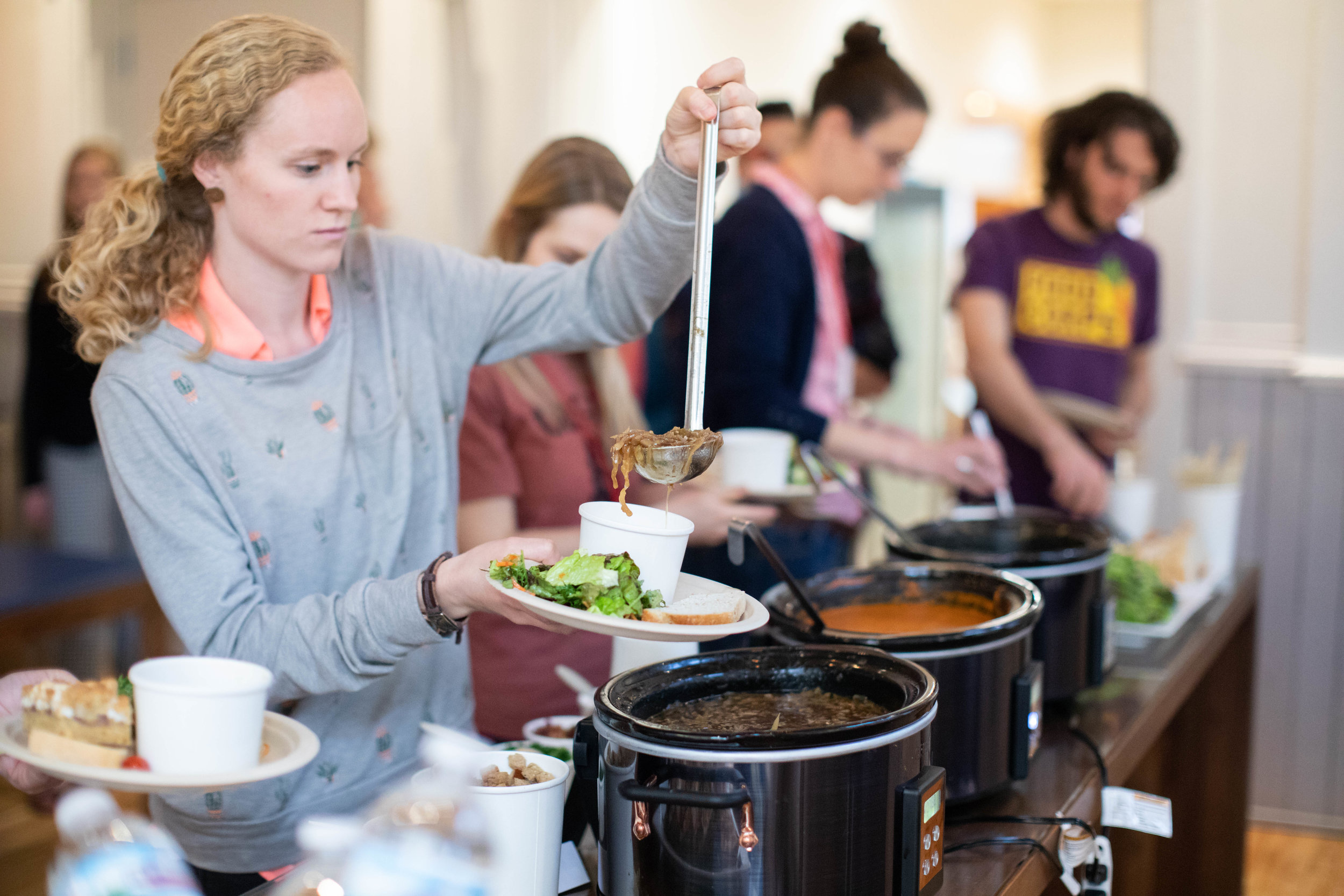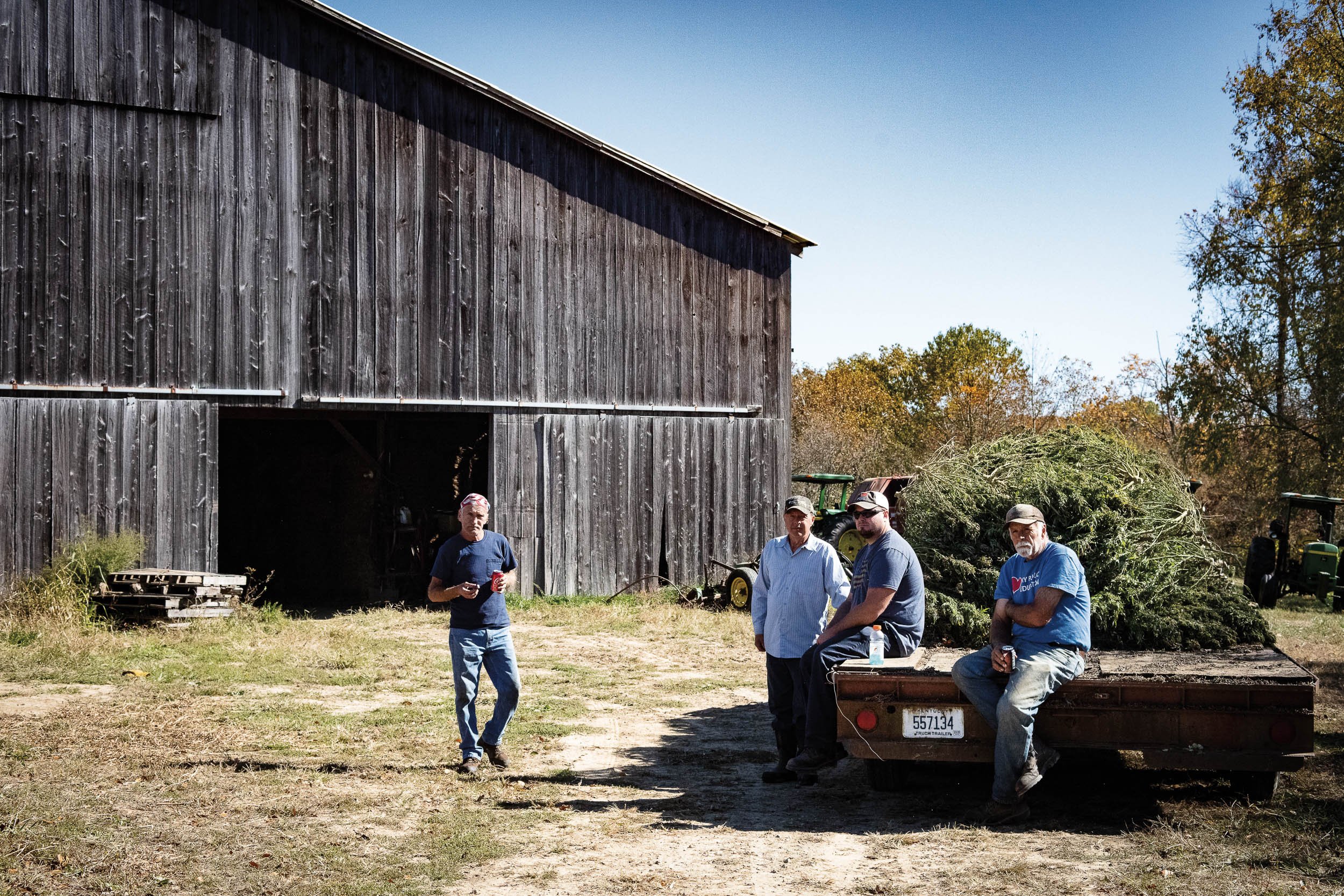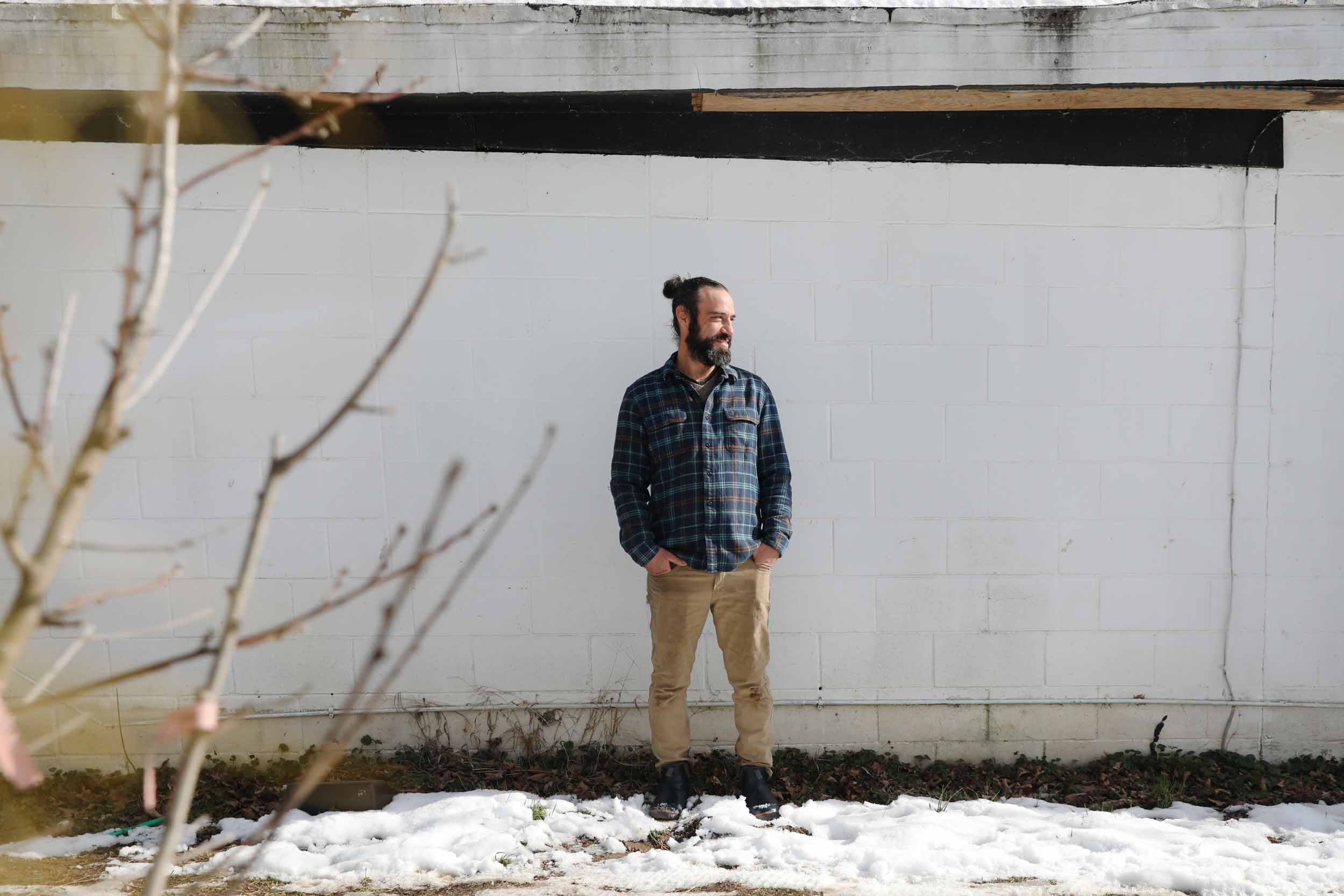A Big Stretch

As more consumers have embraced local produce, farmers are seeing the need for extending the growing season through winter.
Photography by Amie Santavicca
Covid-19: the gift that keeps on imparting lessons, both mundane and revolutionary, whether we ask for them or not. In the last 18 months, we’ve learned so much about the things we take for granted—and the crash course we got in food access was a doozy.
When the pandemic stole our grocery trips and restaurant visits, we pivoted fast to online ordering. When production and processing plants closed down, we found alternatives or learned to live without. We planted gardens, traded sourdough recipes, shared millions of meals “together” over Zoom connections, tenuous and precious.
Some of us discovered or revived our inner gardener, bread maker, and chef de cuisine, connecting directly with local producers for meat, produce, eggs, and more. Indeed, even as the collapse of logistical chains forced dwindling crowds and market closures, farmers got creative, shifting focus to CSA programs and transforming operations to accommodate online sales and drive-thru pickup.
But this isn’t really a pandemic story. It’s a story about the people whose uncompromised vision, hard work, and resilience lives on after the dust settles. It’s about the community we’re building and the future that will sustain us in the hardships yet to come.
Challenging the ‘Sun-Up Proposition’
It’s a weird dichotomy we’re living in when it comes to food. Many of us understand the importance of sourcing food from our nearby communities. Local food is inarguably fresher, better tasting, longer lasting, and better for our local economy than grocery store fare.
At the same time, we’re impatient creatures with a penchant for instant gratification. (Thanks, Amazon!) Even those of us who frequent farmers’ markets don’t enjoy waiting for the produce we crave to be in season.
Thanks to season-extension farming, we don’t have to.
A number of the region’s producers have specialized in season extension for years. They raise animals and plants using seasonal structures and special processing techniques to defy Mother Nature and create a semicontrolled setting year-round. In what would traditionally be the off-season, indoor farmers are able to achieve cultivar selection, quality, and yields that are comparable, and in some cases superior, to outdoor production.
“You’ll sometimes hear farmers refer to it as a sun-up proposition,” says Eric Pawlowski, a sustainable agriculture educator with the Ohio Ecological Food and Farm Association (OEFFA). “Meaning as long as the sun’s up, you’ve got work to do.”
When your growing season lasts the whole year, the sun is always up. That prospect can be especially appealing in the Ohio Valley, where outdoor farmers are constantly chasing the sweet spot for annual rainfall. It’s in our region’s lucrative “shoulder seasons” that extension farmers see true ROI, bringing both winter and summer crops to market, often with little competition.
Not every farmer is cut out for year-round work. Winter has historically given farmers some downtime—time that many find essential for planning, upgrading their operation, training staff, and tending to life’s countless other obligations.
For extension farmers like Mike McGraw, downtime is a foreign concept. His Batavia, OH-based Roothouse Aquaponics produces fresh fish, lettuce, and greens year-round inside a living, breathing ecosystem where there are no off days. In the greenhouse, heaters and dehumidifiers run 24/7 during the winter months. In summer, his fish require indirect sunlight or else they’ll burn, so he has to shade the greenhouses. When pests infiltrate his grow operation, he can’t use even the pesticides approved by the Organic Materials Review Institute. They’ll kill the fish.
“It’s hard to compete against the people in this industry who are willing to flood the market with mediocre food,” says McGraw of the large-scale commercial producers. “But that’s where training and experience and logic come in. All of us in the local community are up against that, but we understand that every cut corner will show up in the food. We have to put in the extra work and money and do it right, because we care about giving people a superior product.”
Economics of Year-Round Agriculture
Considering the endless workdays, pervasive challenges, and frequent lack of support, it’s a wonder farmers have enough energy left to care about the end-of-line consumer. But they do care, and for many the ultimate thrill is bringing hot-ticket items to the winter market that taste as fresh and delicious as those straight from the summer fields.
Of course, the money is nice, too. By extending beyond the traditional growing season, farmers can charge a premium for things like tomatoes, berries, and fresh greens in winter.
“There are a number of high-value crops that will give you enough return on a single harvest to make the economics work,” Pawlowski says. “That’s the seductive nature of season extension. Growing high-tunnel basil after the first frost hits, you can charge two dollars per ounce, double the regular-season price. But there’s going to be an upfront investment, and it’s not small.”
For example, it’s fairly labor intensive to build a 30-by-96-foot high tunnel—the largest dimension eligible for subsidy by the U.S. Department of Agriculture’s Natural Resources Conservation Service—and they can cost anywhere from $10,000 to $20,000. That’s not counting the maintenance to ensure each tunnel is properly watered, ventilated, and pest-free. (Seasonal structures protect crops from many but not all pests and foliar diseases.
The process for applying for subsidies can also be bureaucratic and subject to complicated local zoning ordinances. In addition to connecting local farmers with subsidy programs from organizations like USDA, OEFFA offers internships, apprenticeships, and other beginner programs to help new farmers wrap their heads around the economics and the work that goes into getting started. (Learn more at BeginFarming.oeffa.org.)
“The annual [OEFFA] conference is a signature event, that’s where I developed my skill set and learned how to pay it forward,” says Pawlowski, who now works alongside other sustainable agriculture educators to help new farmers find solid footing in the industry. “We don’t work in hypotheticals. You come to us and tell us your story, and we’re going to get you ready to walk into the NFCS for low-interest loans and cost-sharing.”
It can be humbling for a farmer just starting out, Pawlowski acknowledges, but his team is committed to building a community of support. “We’re constantly thinking about and talking about every possible angle on farming that you can imagine,” he says. “In phone calls, visits, hallway conversations—you find your affinity group here and you learn how to leverage your unique assets and jump into it with your head and not just your heart.”
Old Concepts, New Marketing
Season-extension farming isn’t new, but the conversation ramped up in the 1990s as many U.S. regions began exploring ways to overcome challenges within their growing zones. The Ohio Valley region was a pioneer in this effort, and it’s easy to understand why. There are 88 counties in Ohio, and no two—much less any two grow operations—respond to crops the same way. In addition to unpredictable rainfall, we reckon with soil salination when too much rain leaches vital nutrients from the soil and leaves behind harmful nitrates.
Shortly after Eliot Coleman released his groundbreaking book on the topic, Four-Season Harvest in 1999, the University of Kentucky developed one of the nation’s first high-tunnel production systems. It wasn’t long before other regions throughout the country began to adopt similar technology in their own production strategies.
But even with decades of experience, season-extension farmers still struggle, for all the aforementioned reasons, to bring people to market in winter.
Lucy Owsley Goodman and Eugene Goodman are no strangers to that challenge. Their Boulder Belt Eco-Farm in Eaton, OH, runs the oldest winter CSA program in the state, and one of the oldest in the country. They grow 50 kinds of produce for CSA members, as well as the Richmond Farmers’ Market and Oxford’s MOON Co-op.
When the Goodmans got started nearly 30 years ago, they struggled initially. Their first makeshift greenhouses were made from hardware-store plastic that disintegrated within months. They eventually got connected with a community and learned to build more stable structures, ultimately taking advantage of a high-tunnel cost-sharing program from the USDA’s Natural Resources Conservation Service. Their operation took off, and they soon joined the Oxford Farmers’ Market, selling carrots, kale, and other winter greens alongside just one other winter produce farmer.
Lucy says when the holiday and craft crowds would leave for the year, their sales would plummet from $400 to $75 at the market. But they stuck it out for a couple of reasons. First, she says, farmers’ markets can’t survive without produce vendors. And second, even when the money isn’t great, markets are an essential “social hour” for farmers to network and build community. They were learning a lot in those days about what it takes to attract customers at the market and then keep them interested through the long, cold winter months.
Lucy now sits on the Richmond Farmers’ Market advisory board, where she’s proved instrumental in venue acquisition and even securing liquor licensing as an amenity for winter shoppers. The Richmond Farmers’ Market now enjoys a comfy spot in the historic Starr-Gennett Logo Building—a former piano manufacturing space—and Lucy says both vendors and customers love it.
“Somehow during Covid, $80,000 opened up to get the building winterized last year,” she says. “We did that and the sales shot up to near-summer levels. It’s been really well marketed by the parks department. It’s hard to find a place that can hold everyone and where people are comfortable, but this one has all that and we’re really lucky.”
The Goodmans are committed to sharing what they’ve learned through workshops and farm tours like the one they’ll host this fall with OEFFA. (Learn more at OEFFA.org/events.php.) In a testament to what Lucy would call luck and everyone else would call ridiculously hard work, the Goodmans had almost unheard-of success in 2020. Their CSA program grew from just four to 50 members, and they managed to retain 90% of that membership coming into 2021.
“All those years ago, we borrowed Eliot Coleman’s book from a friend and thought,‘We can totally do this!’” says Lucy, and then she laughs. “We were so naive. But I guess we wouldn’t have gotten into farming in the first place if we weren’t naive.”
Many summer markets close for the season in September, but we have several markets that continue year-round. Find details for local markets in our Market Guide.
Hannah is a graduate of NKU's political science program and a freelance creative who writes extensively about development in Greater Cincinnati. She doesn't like to fly, but she loves to travel. Her favorite books are A Tree Grows in Brooklyn and Love in the Time of Cholera.





